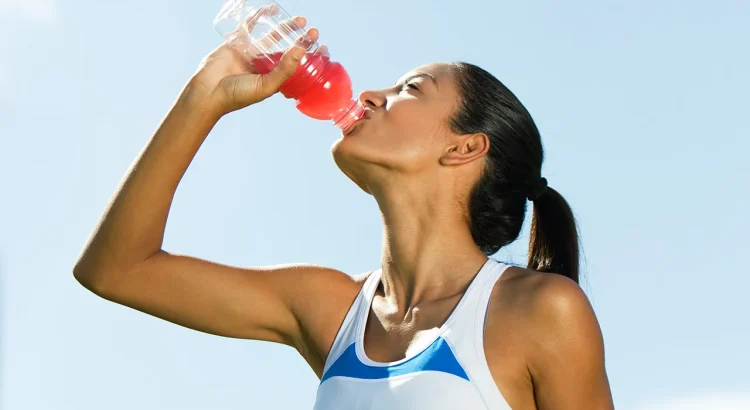John Hawk Insunrated – Electrolyte Drinks have moved from the locker room to grocery aisles in record time. Once reserved for elite athletes, they now target busy individuals seeking better hydration. In Australia, functional waters loaded with sodium, potassium, and magnesium dominate supermarket shelves. Women juggling work, exercise, and family life have embraced these products for their clean-label appeal and low sugar content. Brands highlight natural flavors and transparent ingredient lists, appealing to health-conscious consumers. This trend reflects a broader shift toward preventive wellness not just reactive补 hydration. People no longer wait until dehydration hits before sipping water. They stay ahead with electrolyte-enhanced options designed for daily use. Community fitness groups and wellness influencers further fuel demand by promoting these drinks as lifestyle essentials. The result is a hydration revolution that values balanced minerals and consistent replenishment more than ever before.
Understanding the Science Behind Electrolyte Drinks
Electrolytes help maintain fluid balance, regulate nerve signals, and support muscle function. Sodium plays a key role in retaining water within the body. Potassium supports heart and muscle health, while magnesium aids energy production and nerve transmission. These minerals exit the body through sweat, making replacement critical even during light activity. Scientists emphasize electrolyte drink benefits for exercise recovery, travel dehydration, and illness like flu or fever. Yet they also issue cautions about overconsumption. Excess sodium intake may raise blood pressure, especially in individuals with hypertension. Low-sugar products help reduce calorie load but still deliver electrolytes effectively. Consumers increasingly scrutinize sodium levels per serving and seek products labeled low sodium or with balanced mineral profiles. As electrolyte drinks go mainstream, proper dosing becomes essential. Health professionals urge users to match electrolyte intake to activity levels and overall diet.
“Read about: Burning for Wellness: Experts Alarmed by Gen Z’s Tanning Obsession”
Everyday Uses Beyond Sports Performance
Electrolyte drink consumption now spans more than post-workout routines. Travelers use them on flights to combat dehydration from cabin air. Parents rely on them during childhood illness to ease childhood dehydration. Shift workers sip them during overnight shifts to support focus and energy. Students keep bottles on hand during exam weeks to maintain alertness. Even gardeners and weekend DIYers push hydration tools into their carts. These drinks support everyday life in unpredictable environments, such as high heat or cold, air-conditioning or dry indoor air. They also pair well with meals as a healthy alternative to sugary soft drinks. Some nutritionists add a scoop to morning water to start the day right. Consumers treat these beverages as health insurance small investments that help avoid more serious issues later. The accessibility and versatility of electrolyte drinks cement their place in everyday routines.
“Read more: Frozen Food Revival: Value and Shelf Life Win Over Dining Out”
Regulatory Responses and Consumer Education
Government agencies now track electrolyte products more closely, guiding consumers on safe usage. Health departments issue recommendations on daily sodium intake and warn against overuse. Some labels now include guidance: not for individuals with kidney or heart conditions. Public awareness campaigns stress hydration but balance. Schools introduce hydration education in PE classes, teaching students to refill water bottles with electrolyte blends on hot days. Fitness clubs add electrolyte stations alongside water fountains. Meanwhile, product packaging grows more informative, detailing mineral sources and dietary context. Brands partner with health experts to publish online content and workshops. Retailers host tasting events and information sessions to answer shopper questions. These efforts aim to empower consumers, ensuring they understand benefits and risks. As electrolyte drinks expand beyond niche use, such education helps prevent misuse and maintains public trust in wellness messaging.
The Future of Functional Hydration
The functional hydration market continues to evolve with innovation. Expect to see electrolyte powders that dissolve in ambient temperature water and single-serve tablets for portability. Formulas with added adaptogens such as turmeric or ashwagandha cater to mental clarity and stress relief. Some brands incorporate prebiotics for gut health in addition to hydration. Packaging innovation includes compostable pouches and recyclable cartons to meet environmental concerns. Tech companies launch hydration tracking apps that sync with wearable devices to recommend personalized electrolyte consumption. Subscription boxes of mixed-flavor electrolyte blends cater to taste variety. Collaborations between beverage firms and food delivery services may bring cold electrolyte drinks to doorsteps. Amid this growth, experts emphasize research-backed claims and nutrient balance. The hydration transformation from athletic accessory to daily health staple signals a major shift in how Australians and people worldwide approach self-care.



